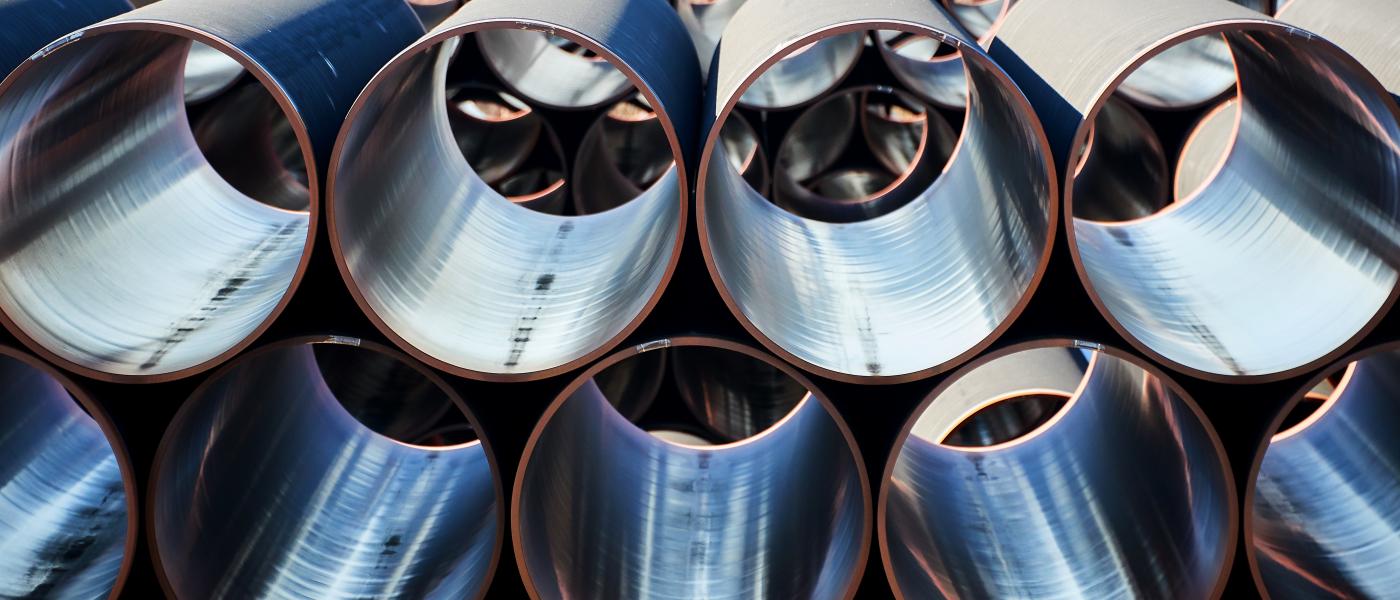In response to the recent threat of U.S. sanctions on entities involved in the Nord Stream 2 gas pipeline between Germany and Russia, German Economic Minister Peter Altmaier claimed the United States simply wants a bigger slice of the European energy market for American liquefied natural gas (LNG) exports. In reality, Washington has long been critical of the pipeline because it is bad for Europe, not American business.
The primary reason the United States opposes Nord Stream 2 is that it would increase Europe’s (and particularly Germany’s) dependence on Russian gas imports. Currently, almost 40 percent of Europe’s gas imports come from Russia. Due to diminishing domestic gas reserves, Europe will be forced to import even more natural gas in the near future, giving Russia the opportunity to increase its dominance over European energy imports. Construction of Nord Stream 2 would allow for the import of an additional 55 billion cubic meters per year, bringing the total export capacity of Russian gas pipelines into Europe to more than 300 billion cubic meters per year. However, the problem with Nord Stream 2 is not just that it makes Europe more energy dependent on Russia, but how Russia uses that dependence as political leverage to subvert democratic institutions.
European’s increased dependence on Russian gas would give Moscow more leverage to weaponize energy against Europe and render key European nations more susceptible to Russian malign influence. The manipulation of gas flows is an important part of a larger asymmetric foreign policy toolbox, along with cyber-attacks, disinformation, and a variety of other tools that Moscow uses to interfere in other nations’ democratic processes and institutions. Furthermore, it would undermine a cash-strapped Ukraine in reaping benefits as a gas transit country, and it provides the Kremlin with an opportunity to further employ its asymmetric activities in the Baltic Sea, particularly the possibility of installing undersea surveillance equipment during the construction of the pipeline.
In the past, Russia has systematically utilized its energy sector as a tool of foreign policy, manipulating gas flows into European countries in response to actions and policies that Moscow views as contrary to its interests. In this way, the Kremlin utilizes pipeline politics to hold other governments hostage in an attempt to influence policy decisions. Prominent examples of this occurred in 1993, 2006, and 2010, when Russia shut off gas flows to Estonia, Ukraine, and Belarus, respectively. In these cases, Gazprom cut off the gas supply ostensibly because of unpaid debts to Russia. However, the true cause was a policy or event that challenged Russian interests and triggered the Kremlin’s response, such as the Orange Revolution in Ukraine. In fact, Ukraine alone has fallen victim to this tactic on three different occasions since 2006, each time after making an attempt to move closer to the EU and NATO. The most recent dispute is still ongoing; despite a ruling by a Swedish arbitration court in favor of Ukraine, Gazprom refuses to resume gas deliveries through Ukraine and pay the allotted fine. With the completion of the Nord Stream 2 project, the Kremlin could more effectively turn this arsenal of influence on Germany.
A secondary cause for U.S. resistance is Moscow’s intention to utilize Nord Stream 2 to isolate Ukraine from the greater European community. Ukraine has long been the primary transit country for Russian gas exports into Europe. However, since the annexation of Crimea and invasion of eastern Ukraine in 2014, Russia has been seeking to build pipelines that bypass Ukraine. The gas flows through Ukraine generate significant revenue for the Ukrainian government, the reduction of which could contribute to the destabilization of Ukraine. And as 39 bipartisan U.S. Senators recently wrote to the Trump administration, Ukraine’s position as a transit country gives it leverage over Russia in negotiations on transit contracts and in its ongoing conflict in eastern Ukraine. With the construction of Nord Stream 2, Ukraine’s negotiating position on issues that will shape the future of the country could weaken, undermining the West’s significant efforts to support Ukraine against blatant Russian aggression.
Contrary to Minister Altmaier’s supposition, the United States’ opposition to Nord Stream 2 is not about LNG exports to Europe. U.S. exports of LNG have never been higher, and the United States does not rely on Europe as a market for natural gas the way that Russia does. Due to higher gas prices, the United States exports LNG predominantly to Asia and the Americas, with just three countries (namely Mexico, South Korea, and China) receiving more than half of total LNG exports in 2017. According to Deputy Assistant Secretary of State Sandra Oudkirk, the United States would like to sell its LNG to anyone who will buy it, but American LNG companies are not state-owned and exports are driven by the market. Additionally, the United States has been consistently opposed to pipeline deals like Nord Stream 2 since long before it was an LNG exporter, and there is no reason to treat Nord Stream 2 any differently.
Nord Stream 2 is a pipeline for both Russian gas and Russian influence, allowing the Kremlin to more easily manipulate internal European politics to suit Russia’s purposes. By continuing to pursue the Nord Stream 2 project, Germany is putting itself at significantly greater risk of Russian interference in its own politics and empowering the Kremlin to more freely pursue its political agenda across the entire continent. As a bonus, Berlin is giving Moscow exactly what it wants – a wedge to further strain ties between transatlantic allies.
The views expressed in GMF publications and commentary are the views of the author alone.





